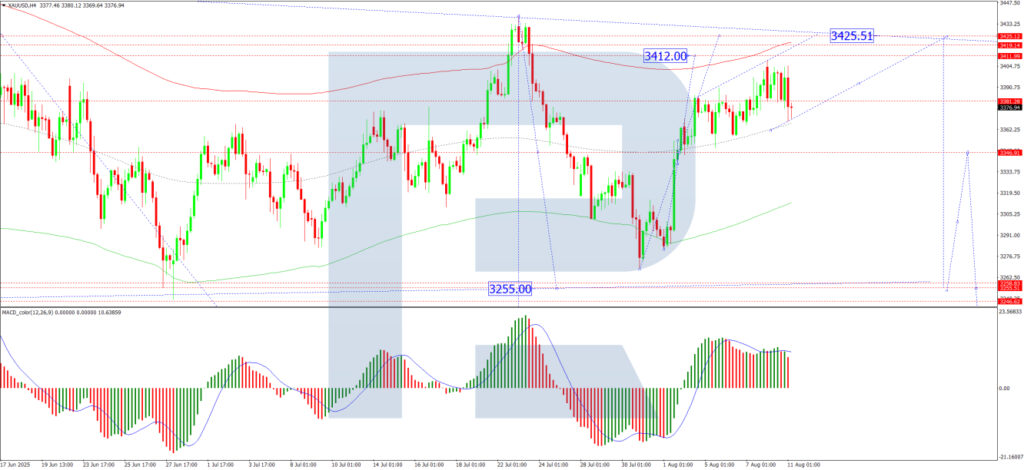The precious metal gold embarked on the trading week with a downturn, retracting underneath the threshold of $3,380 per troy ounce as of Monday. This shift in market dynamics can be attributed to a relaxation in geopolitical stresses, which subsequently diminished investor appetite for gold’s traditionally safe-haven allure.
The context for this downturn was notably influenced by an announcement from the United States President, Donald Trump, on the preceding Friday. President Trump disclosed intentions for a forthcoming rendezvous with his Russian counterpart, Vladimir Putin, scheduled for the 15th of August in Alaska. The pivotal agenda for this meeting is to negotiate a ceasefire, which, if successful, might mitigate the chances of further sanctions being imposed by the United States against Moscow. Such diplomatic manoeuvres are critical in understanding the flux in gold prices due to their potential impact on global economic sanctions and international relations.
Despite this dip in demand as a haven asset, gold prices managed to garner some support, buoyed by persistent trade uncertainties and burgeoning expectations of monetary policy adjustments by year-end. Notably, an escalation in trade tensions was marked by the United States imposing higher tariffs on imports from several countries last Thursday. The imposition of these tariffs has led affected trade partners to call for urgent concessions, further complicating the global trade fabric and influencing gold prices in the process.
Heading into the week, all eyes were set on key economic indicators from the United States, such as employment and inflation figures, alongside Federal Reserve policies. These indicators are crucial in shaping expectations and strategies among investors, particularly concerning interest rate decisions by the Federal Reserve, hence directly impacting gold’s value proposition as an investment.
Adding layers to this complex scenario is the ambiguity surrounding the White House’s stance on gold bullion tariffs. Recent confirmations that gold imports would be subjected to duties, juxtaposed with pending inflation data, have investors on tenterhooks regarding how these factors might influence the Federal Reserve’s rate decisions.
Diving into a more granular analysis through technical lenses, the XAU/USD pair showed a consolidation pattern around $3,383, with recent fluctuations spanning from a high of $3,408 to a low of $3,367. Predictions for the short term hinted at potential upsides towards $3,420 and possibly $3,425, before welcoming a fresh descent targeting $3,345. Such movements would only become more pronounced should prices dip below this established baseline, potentially aggravating losses towards $3,255. These technical predictions are partly buttressed by indicators such as the MACD, hinting at an upward trajectory.
An hourly chart overview suggested a completion of an upward structure peaking at $3,408, followed by a correction to $3,368. Expectations leaned towards a rebound aiming for $3,393, setting the scene for a consolidation phase. Breakouts on either side of this consolidation range could instigate significant price movements, as indicated by stochastic oscillator trends.
In conclusion, while gold’s aura as a safe-haven asset faces challenges amid dwindling geopolitical tensions, it remains buoyed by trade-related uncertainties and anticipations of Federal Reserve policy adjustments. From a technical standpoint, crucial resistance near $3,420 emerges as a significant benchmark, with potential for bearish reversals should upward momentum falter.
It is paramount for investors and market participants to consider the myriad factors influencing gold prices, from geopolitical developments and trade policies to economic indicators and monetary policies. Such a holistic approach is indispensable in navigating the complexities of gold trading.
*Disclaimer: This article represents an analysis based on the author’s insights and is not to be construed as trading advice. The reader is responsible for any trading decisions made, and it is recommended to conduct thorough research and seek professional advice if necessary.


